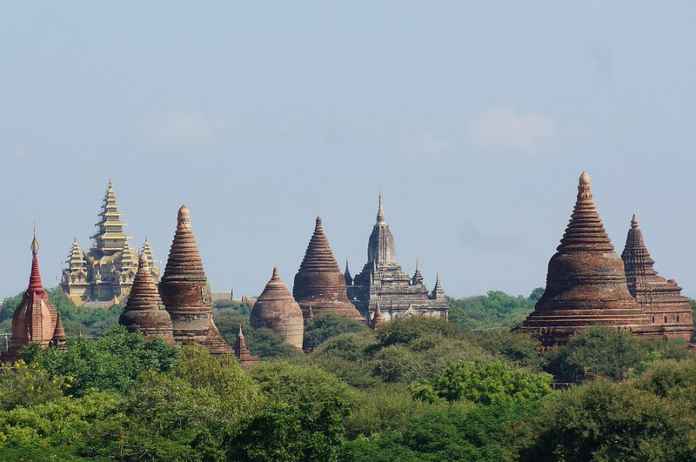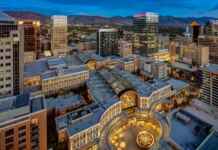Bagan, located on the eastern banks of Irrawaddy river, with surrounding mountains in central Burma has a rich cultural history associated with it. The city was a central powerbase in the mid 9th century under King Anawratha, who ultimately unified Burma under Theravada Buddhism. It is renowned all the world over for being the largest and densest concentration of Buddhist temples.
The numerous temples and pagodas, in various shapes and sizes, which litter the landscape of Bagan were built by the kings of Bagan between 1057 and 1287. The shape and construction of each building is considered to be highly significant. The interiors of the temples contain frescoes and carvings and statues of Buddha. It has been estimated that originally, 4,450 temples were built. An important reason behind this is a legacy of the Buddhist belief that to build a temple was to earn merit. At this date, some 2230 temples survive as many were swept away by earthquakes and destroyed by foreign invasions.
As far as the climate of Bagan is concerned, the city usually is hot for most of the year. Summer, which is usually between the months of March and May experiences soaring temperatures in the range of 40 to 45 degrees. Rainfall is highest in June and October. According to travel enthusiasts, the ideal time to explore the Bagan Temples is between November and February, when the temperatures are relatively moderate. Another excellent option is to time your trip during a full moon as it is a popular time for local festivals.
While travelling to Burma was considered problematic a few years back, the situation has improved now and there are a variety of options now to access the Bagan Temples and Pagodas. To access Bagan by air, the best option is to take a flight from Yangon, with the journey taking approximately 1 hour 20 minutes, provided there are no stopovers. Tickets from Yangon cost around £50 one-way. Another option is to board a train to Bagan.
Overnight trains run daily from Yangon. with the tickets costing approximately $35 (£23) for an upper-class seat, $40 (£26) for a sleeper. There is also a direct train service running from Mandalay to Bagan with two departures daily. There are also available comfortable bus links from Mandalay. Finally, another interesting and fascinating option is to take a ride on the daily express ferry service runs down the Irrawaddy from Mandalay to Bagan taking about five hours.
For commuting within Bagan also, there are a few interesting options available. A highly delightful option is to take a hot air balloon ride at sunrise. The roughly 45-minute flight offers a glorious view of the landscape and the temples. Since the temple site is too big to be explored on foot, renting a bicycle is also a popular option. To get a feel of the rural life, it is highly recommended that you opt for a ride on a horse cart.
Amongst the popular temples in the Bagan area are Ananda Temple, That Byin Nyu Temple, Dhammayan Gyi Temple and Shwesandaw Temple among others.
When planning a visit to Bagan Temples, visitors should keep a few guidelines in mind:
• Burma, in general is a conservative country. So, dress appropriately. Shorts, tank tops etc are best avoided.
• Remember that it is mandatory to remove shoes and socks before entering temples and Burmese homes.
• If your bare shoulders or knees are visible, you might be denied entry to the temple/pagoda.
• Women might not be admitted to some of the temples.
Simply keep these guidelines in mind and you’re bound to enjoy your expedition to Bagan Temples!










